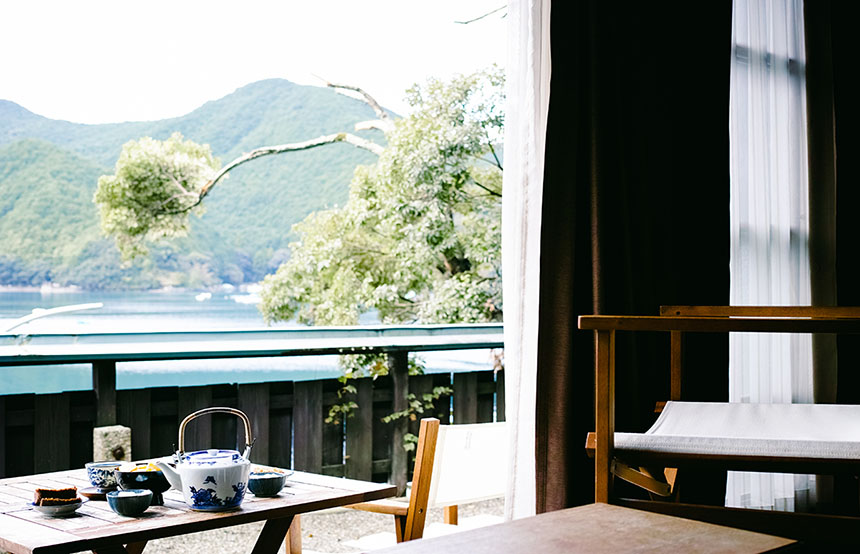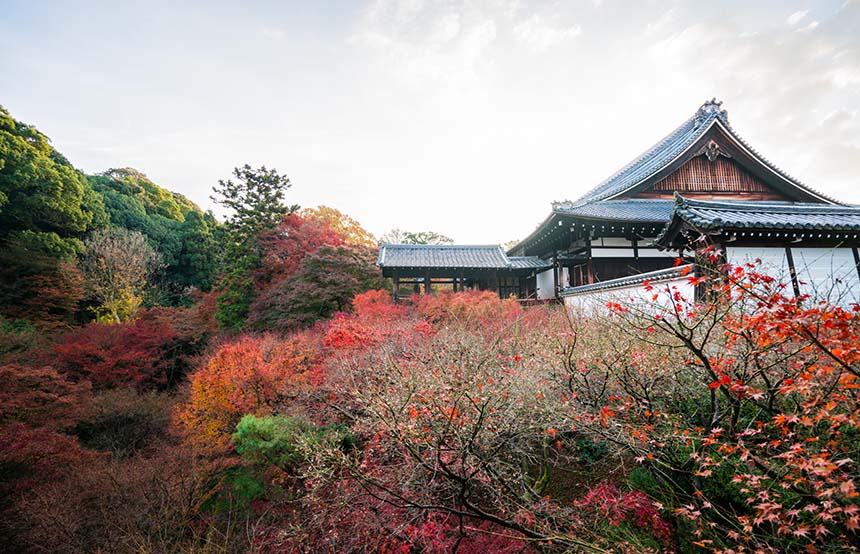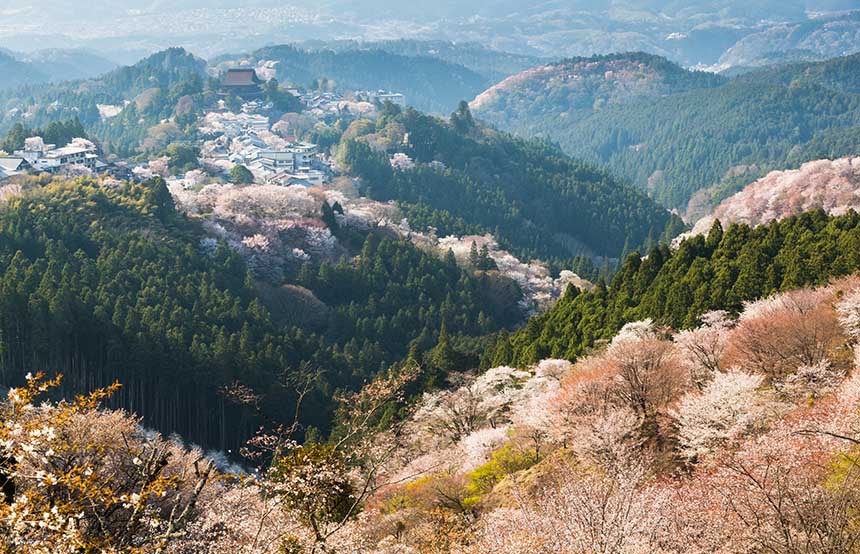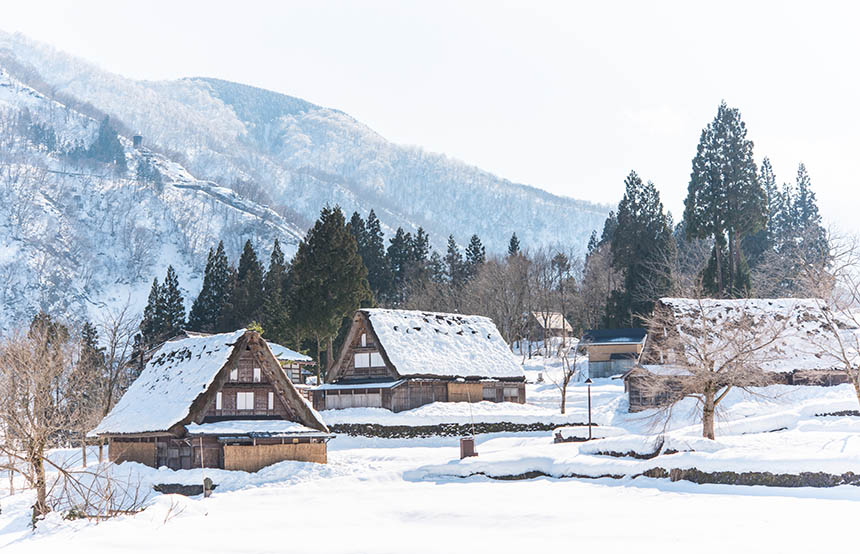Telling someone you’re going on holiday to Japan will probably elicit the same response: ‘are you going during cherry blossom season?’ Thanks to Instagram, it seems to be the only season the islands are known for. But dig a little deeper and you’ll find that Japan has something up its sleeve all year round. In autumn, or aki, it’s all about momijigari (which literally translates to ‘red leaf hunting’), while in January, snow flurries across the north signal the start of the country’s ski season. Come July though and it’s time for Okinawa’s boho beaches and cool coastal towns to have their moment. And don’t get us started on the festivals. Hosting up to 200,000 a year, you’re guaranteed to be in for a generous slice of festival fever and spectacular views whatever season you choose to stop by. Read on to discover the best season to visit Japan.
Spring
Haru
Ask anyone when the best season to visit Japan is and they’ll probably say spring. Balmy winds, known as haru-ichiban, begin to blow, mountains shed their winter coats to become scenic alpine routes filled with nattering ptarmigans and parks become never ending canopies of blossom. Join locals in hanami (floor viewing) – the annual observance of spring blossom – at picnics in Shinjuku Gyoen, walk the walk along Kyoto’s picturesque Philosopher’s Path and hanami with the best of them at Ueno Cherry Blossom Festival in Tokyo – think a pastel pink celebration complete with food stalls, folk dancing and a flower market. A trip to the hills, or Mount Yoshino to be precise, for an authentic Sakura display of over 1,000 cherry trees should also be added to any spring itinerary.
Summer
Natsu
Summers in Japan are notoriously wet, hot and humid. But don’t let that dissuade you. June’s tsuyu (rainy season) brings with it verdant views across the country’s mountainous temple-filled towns like Hakone and Koyasan, while July and August’s rising temperatures make way for some of the season’s big festival hitters. From Akita Kantō Matsuri in Northern Honshū, which sees revellers celebrate by balancing bamboo poles festooned with lights and lanterns on their heads and shoulders, to Gūjo Odori in Gūjo-Hachiman, where locals dance the night away for 32 consecutive nights, it is clear that the Japanese know how to party. Another reason to consider Natsu the best season to visit Japan is its food. To combat the climbing temperatures, food stalls change their tune and put on displays of kakigōri (sweetened shaved ice and ice cream) and cold-noodle soups that require you to catch them through a bamboo half-pipe.

image by Pauline Chardin
Autumn
Aki
Step aside New England, there is a new leaf peeping paradise in town. Colloquially known as momijigari, Japan’s change of season is taken so seriously that the country creates an annual leaf forecast. But fear not, the camera-crazy crowds haven’t caught wind of the season quite yet. Koyo (another phrase the Japanese have coined for leaf peeping) your way through avenues of golden ginkgo trees and up well-worn mountain trails blanketed in maple trees and maroon-hued moss. Follow the sweeping season to the south of the country, where crimson colours linger as late as November. Explore ancient ochre-turned gardens, UNESCO protected temples (we’re looking at you Tenryu-ji) and charming onsen towns, where you will be rewarded with a salubrious soak in steaming springs. Surely the thought of that alone makes autumn one of the best seasons to visit Japan?

Winter
Fuyu
Japan doesn’t do things by halves and winter (or Fuyu) is no different. Ski season is in full swing and traditional alpine villages revel in chocolate-box glory (Google Shirakawago in winter and you’ll see what we’re on about). But even if skiing isn’t your thing, winter still has plenty up its down-jacket sleeve. Swing by Hokkaidō’s Sapporo Snow Festival, which shuts down the city’s streets in favour of 65-foot tall ice sculptures, toboggan runs and skating rinks. Pause by Tsurui to witness the seemingly meticulously choreographed mating dance of red-crowned cranes and make the most of the country’s crowd-free cities, where you’ll be able to sightsee to your hearts content. Plus, who can say no to a bottle of warm sake under a kotatsu (thick quilt) in a charming ryokan at the end of the day?















